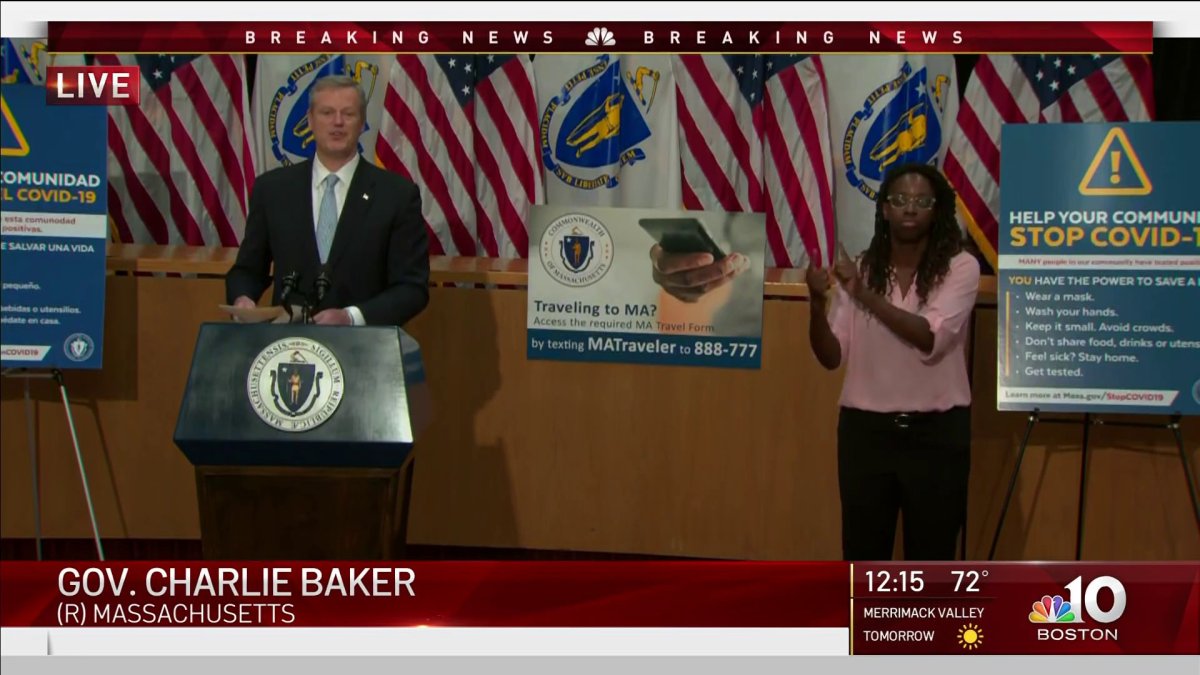
In a COVID-19 update, Gov. Charlie Baker announces new resources for areas in Mass. with dangerously high transmission rates of the virus, including Chelsea, Everett, Lawrence, Revere and Lynn.
Massachusetts reported 393 new confirmed coronavirus cases Thursday and an additional 17 deaths.
There have now been 8,870 confirmed deaths and 119,819 cases, according to the Massachusetts Department of Public Health. The percentage of coronavirus tests coming back positive, on average, has ticked down 0.9%, according to the report.
The total number of coronavirus deaths in the daily COVID-19 report, however, is listed as 9,077, which would indicate there are 207 more deaths that are considered probable at this time.
On Wednesday, the state released its latest weekly data on the coronavirus pandemic, including an updated version of the state's new community-level risk assessment map.
The data includes a breakdown of the total number of coronavirus cases in each Massachusetts city and town, as well as the new map.
The map shows the number of cases detected on average each day over the last two weeks in each of Massachusetts' communities. More than 8 cases per 100,000 translate to high risk, between 4 and 8 cases per 100,000 is moderate risk, and any less than that is low risk, Gov. Charlie Baker explained last month.
The high-risk communities in Wednesday's report, indicated in red, are Chelsea, Revere, Lynn, Everett, Lawrence and Framingham.
In an effort to address the high COVID-19 case and transmission rates of those five communities, Gov. Charlie Baker on Thursday announced a new campaign to ramp up enforcement efforts and coordinate intervention efforts. The campaign, which is the extension of the recently-created COVID Enforcement and Intervention Team, will feature billboard ads, digital and social media messaging, multi-lingual field teams, phone and text outreach, and communication with local organizations.
"The goal here is to make sure people understand what's going on in their community, where resources are available and what they can do themselves to stop the spread," Baker said. "People have the power here to save a life and everybody needs to do their part to stop the virus."